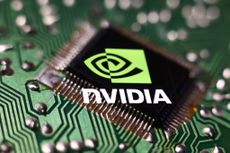How to Find the Best Tech Stocks to Buy
Tech stocks have generated massive returns for investors over the years, but how do you find the best ones to buy? We take a closer look here.


Tech stocks have generated impressive returns for investors in recent decades. To find evidence of this, look no further than the Technology Select Sector SPDR Fund (XLK), a popular exchange-traded fund that tracks the technology sector of the S&P 500. Over the past 10 years, XLK has averaged an annual total return (price change plus dividends) of 20.5%, nearly double the S&P 500's return of 12.4%.
The performance of XLK has been largely propelled by mega-cap tech stocks such as Microsoft (MSFT), Apple (AAPL), Nvidia (NVDA), Alphabet (GOOGL) and Meta Platforms (META) – all members of the Magnificent 7. The gains produced by these blue chips have been supported by transformative trends in cloud computing, artificial intelligence (AI), mobile technology and the Internet of Things (IoT).
Given these past successes, investors may wonder if a continued strategy of investing in the best stocks in the tech sector will remain profitable. The answer isn't straightforward, as the investment landscape is prone to unexpected changes. With interest rates returning to more standard levels, the explosive growth rates of tech companies could begin to fizzle.
"It is likely that investors will once again learn that a vast swath of the Information Technology sector experiences cyclical growth rather than secular growth," says Jordan Irving, a portfolio manager at Glenmede Investment Management LP.
If so, astute stock selection becomes key for investors aiming to capitalize on the growth opportunities. Fortunately, there are effective methods to help investors sift through the noise and identify the best tech stocks to buy. Here are three to consider.

To continue reading this article
please register for free
This is different from signing in to your print subscription
Why am I seeing this? Find out more here

Be mindful of market opportunity
The total addressable market (TAM) is the total spending or revenue opportunity for a product or service. This serves as a metric for gauging the growth potential of technology investments. The bigger the TAM is the better as it suggests ample space and money to fuel the expansion of that particular product or service.
But how big is big enough? While there's no absolute figure, a TAM of at least $20 billion is often used as a yardstick. For example, if a company captures a 5% slice of TAM for that product or service, this would yield $1 billion in sales ($20 billion times 0.05%).
To find data on a TAM, you can search the internet for firms like Gartner, Canalys, Statista and International Data Corporation (IDC). While they sometimes charge fees for comprehensive reports, the summaries of the analysis will often include current spending amounts and growth estimates.
The most promising TAMs are those that hint at transformative potential. Consider the case of Netflix (NFLX) and its foray into streaming. When Netflix shifted to subscription-based streaming from its DVD rental service, there was no data on this industry since the market was too new.
But a way to evaluate the TAM was to look at the global spending on entertainment. In 2009, it was a whopping $1.3 trillion, according to research from PricewaterhouseCoopers.
In other words, there was a massive opportunity for Netflix. And of course, the company capitalized on this in a big way. NFLX stakeholders have been rewarded handsomely too. A $1,000 investment in Netflix stock in 2009 is now worth more than $120,000.

Sift through the noise
Navigating a large TAM comes with the caveat of facing stiff competition. This is why investors seeking out the best tech stocks need to sift through the noise and find companies that are offering the most attractive value proposition for customers.
Again, Netflix is a classic example of this. In 2010, the company outlined a clear strategy for winning the market opportunity for streaming. It noted the advanced infrastructure for broadband that was accessible on various devices.
Then there were the heavy investments in original content. This approach bore fruit as evidenced by its 20 million subscribers by 2010, which was validation of its business model. And in its latest earnings report, Netflix said the number of paid subscribers hit a record 260.8 million.
Salesforce (CRM) serves as another case study on how to find the best tech stocks to buy. Co-founder and CEO Marc Benioff revolutionized the technology industry with the software-as-a-service (SaaS) model. This innovation changed software delivery, enabling swift deployment and scalability by allowing users to operate software directly over the internet. This meant avoiding the hassles of installation and minimizing the need for maintenance. Notably, this model also ensures a consistent revenue flow.
Salesforce's strategy has been hugely rewarding for its investors. The company, which priced its initial public offering (IPO) at $11 back in June 2004, has seen its stock price climb to a record high of $285 as of January 2023. And on a total return basis, the Dow Jones stock has averaged an annual return of 23.7% since it first began trading.

Be a contrarian
Skepticism was rampant toward Amazon.com (AMZN) in its early years due to massive losses and fierce competition from established companies such as Barnes & Noble. Doubt persisted for years, even extending to its foray into cloud computing with Amazon Web Services. Many predicted this would be the company's downfall.
This cynicism wasn't unique to Amazon. In fact, it's been a common thread toward all the now-celebrated tech stocks such as Alphabet, Apple and Nvidia. These companies thrived because their leaders defied the status quo.
Alphabet's Google honed in on refining search capabilities and monetizing clicks, in contrast to the then-popular portal approach of its competitors. Apple chose to develop proprietary platforms and invest in delivering unparalleled user experiences.
Nvidia anticipated the impact of AI early on and recognized the necessity for specialized chips, successfully adapting its GPUs (graphics processing units) for the AI revolution. This pivot included developing a software system. It was an ambitious and unconventional move for a hardware-focused company, but this created a powerful comprehensive ecosystem.
Investors wanting to know how to find the best tech stocks to buy will want to consider those that have an ample amount of skepticism levied toward them. The presence of doubters can be an indicator of a company's commitment to innovation and creativity – essential ingredients for long-term success and shareholder value.
Related content
Get Kiplinger Today newsletter — free
Profit and prosper with the best of Kiplinger's advice on investing, taxes, retirement, personal finance and much more. Delivered daily. Enter your email in the box and click Sign Me Up.

Tom Taulli has been developing software since the 1980s when he was in high school. He sold his applications to a variety of publications. In college, he started his first company, which focused on the development of e-learning systems. He would go on to create other companies as well, including Hypermart.net that was sold to InfoSpace in 1996. Along the way, Tom has written columns for online publications such as Bloomberg, Forbes, Barron's and Kiplinger. He has also written a variety of books, including Artificial Intelligence Basics: A Non-Technical Introduction. He can be reached on Twitter at @ttaulli.
-
 Rent a Luxury Pool This Summer With Swimply — the Airbnb of Pools
Rent a Luxury Pool This Summer With Swimply — the Airbnb of PoolsWith Swimply, you can live it up at a luxury pool while escaping the heat and going for a swim.
By Erin Bendig Published
-
 The Secret Credit Card for Amazon Prime Day Shopping
The Secret Credit Card for Amazon Prime Day ShoppingThis "secret" credit card for Amazon Prime Day shopping can maximize your cash back rewards. Plus get a $300 bonus.
By Erin Bendig Published
-
 Stock Market Today: Markets Surge on Dovish Remarks From Powell
Stock Market Today: Markets Surge on Dovish Remarks From PowellThe S&P 500 topped 5,600 for the first time ever, boosted by mega-cap tech stocks.
By Dan Burrows Published
-
 Stock Market Today: S&P 500 and Nasdaq Hit Records as Jobs Growth Slows
Stock Market Today: S&P 500 and Nasdaq Hit Records as Jobs Growth SlowsAn uptick in the unemployment rate amid a cooling labor market could accelerate the Fed's rate-cut timeline.
By Dan Burrows Published
-
 The Top-Performing Actively Managed Funds of the Last Decade
The Top-Performing Actively Managed Funds of the Last DecadeThese are the actively managed funds that have performed best over the last decade.
By Nellie S. Huang Published
-
 Stock Market Today: Stocks Close Higher Ahead of Powell Speech
Stock Market Today: Stocks Close Higher Ahead of Powell SpeechThe main indexes kicked off the second half with a win thanks to solid gains in several mega-cap stocks.
By Karee Venema Published
-
 Stock Market Today: S&P 500, Nasdaq Snap Losing Streaks
Stock Market Today: S&P 500, Nasdaq Snap Losing StreaksNvidia regained $197 billion in market value thanks to Tuesday's buy-the-dip session.
By Karee Venema Published
-
 Stock Market Today: Nvidia Enters Correction Territory
Stock Market Today: Nvidia Enters Correction TerritoryThe chipmaker has declined nearly 13% since hitting an all-time closing high earlier this month.
By Karee Venema Published
-
 Stock Market Today: Another Down Day for Nvidia Drags on Stocks
Stock Market Today: Another Down Day for Nvidia Drags on StocksThe mega-cap chipmaker shed more than 4% this week, creating headwinds for the S&P 500 and Nasdaq.
By Karee Venema Published
-
 Stock Market Today: S&P 500, Nasdaq End Lower as Nvidia Sinks
Stock Market Today: S&P 500, Nasdaq End Lower as Nvidia SinksThe Dow Jones Industrial Average, on the other hand, closed higher thanks to strength in Salesforce.
By Karee Venema Published
